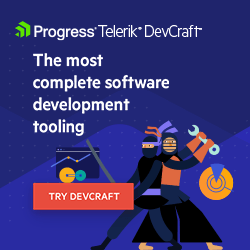Developers Are from Saturn, Designers from Neptune: Survey Results

The State of Designer-Developer Collaboration Survey Report 2024 results are in!
The “State of Designer-Developer Collaboration Survey 2024” results are in! This global survey ran between July and September this year and aims to shed light on the way designers and developers work together in the context of web development, and the role design systems have in this collaboration.
You can find the data at the Designer-Developer Collaboration Survey Report 2024 page. For a deep-dive into all the insights and fascinating cross-sections, you can download the free report analysis. It surfaces everything we learned about the relationship between designers and developers, including ideas for making it more efficient and satisfying—all beautifully presented and laid out for your reading pleasure.
The survey represents professionals working in both design and development roles, plus other stakeholders in the designer-developer handoff. The respondents come from 50 countries, work in 20 major industry categories and are employed in businesses ranging from one-person shops to small- and medium-sized companies and enterprises with 5,000+ employees.
You will find a lot of information that paints a current picture of how designer-developer collaboration is set up. For example, we learned that the most prevalent team model involves two to five developers and one designer; however, one in four developers we surveyed doesn’t have a designer assigned to their current project.
When it comes to hiring outside help, most companies seem reluctant—72% count exclusively on their internal specialists to get the job done. Still, 22% assign a mixed bag of internal and external specialists to their web projects.
We learned 46% of all teams collaborate daily or at least a few times a week. On average, each professional uses 2.3 different communication channels. However, 4% of collaborating designers and developers never communicate directly; rather, they use a mediator. A further 7% collaborate very rarely—just once a month or less!
Unfortunately, there’s a high price to pay for overcorrecting and not having meetings at all. Turns out at least 65% of respondents experience challenges with their design-to-development process. Visit the designer-developer collaboration report to see what the most common challenges are and how the frequency of communication correlates with the quality of designer-developer collaboration.
In the downloadable report, you’ll discover the most interesting cross-sections we explored. We were surprised to find out that, while working for internal vs. external stakeholders did not correlate with the relationship quality between design and development, the number of projects per year did. Teams working on 10+ projects are mostly fine, teams working on a single project are also fine and those working on 2-10 projects are least likely to have a positive relationship.
Perhaps people working on 10+ projects are forced to establish a structure and processes that enable them to be at their most efficient so as not to drown in deadlines? If you have real-life experience that helps shed light on this dynamic, please share it in the comments below!
Some good news from the design systems section: the top three benefits listed by web development teams who have a design system match the top three goals people who don’t yet have a finished design system set: better user experience, improved consistency and faster design to dev time. A rare situation in which expectations match reality, isn’t it?
Enough with the spoilers, friends! It’s clear that the crossroads of design and development is a bustling, beautiful and, yes, sometimes a bit of a bumpy place. It’s definitely worth exploring for anyone seeking to become a better, happier professional. Check out the report and clear away the fog.

Nora Petrova
Nora is a product marketing manager and the proud mother of Sophie. She is dedicated to enhancing developer experience and boosting productivity and is passionate about improving designer-developer collaboration. A snowboarder, an improv theater performer and a writer (even if her work often stays unpublished), she finds joy in exploring both the physical world and the limitless realm of imagination.

